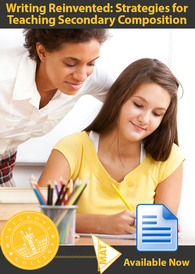 We all want our students to become critical thinkers and we have no qualms about telling them this (“Think critically about this,” we plead). Of course, if we want our students to learn how to think critically—evaluate arguments, recognize contradictions and identify assumptions—we’ll have to play an active role in building these skills. While there are countless ways to do this, none could be more fun and painless than riddles.
We all want our students to become critical thinkers and we have no qualms about telling them this (“Think critically about this,” we plead). Of course, if we want our students to learn how to think critically—evaluate arguments, recognize contradictions and identify assumptions—we’ll have to play an active role in building these skills. While there are countless ways to do this, none could be more fun and painless than riddles.
Many of us work out riddles, word games and logic puzzles to pass the time, relax or entertain ourselves. While they work nicely for this, the folks over at Education World remind us that many puzzles also require the player to engage in higher-order thinking and very often align nicely with each tier of Bloom’s Taxonomy.
A Google search will render millions of puzzles, but the trick will be to find something that can be delivered verbally, something that is challenging, but not impervious.
Once you’ve selected your riddle, it’s time to get the school involved. If your school has students conduct the beginning and end-of-the-day announcements, why not have one of them announce the “Riddle of the Day” or rotate each day by having a different member of the faculty announce the riddle?
No matter what system you adopt, you should always encourage students to come up with their own creative solutions to the riddle—and never give away the answer! Just encourage their creativity and critical thinking; give them something to ponder, but wait until the end of the day to reveal the answer. You’ll be surprised how many students approach you throughout the day to share their answers.
To liven things up, you might consider having a school-wide “Riddle challenge.” You’ll still read the riddle during the morning announcements, but this time you’ll ask students to submit their answer, their name, their teacher’s name, and place them in the announcer’s mailbox by, say, 2:00 that afternoon. This will give you enough time to read through all of your submissions and choose your favorites before you announce the winners at the end of the day. To maximize submissions, try rewarding the winners with an ice-cream party for their entire class.
Since it’s National Reading month—and since we’re discussion critical thinking—we thought you might also be interested in checking out a few more reading strategies that will teach your students not only how to become critical thinkers, but critical readers, too: “5 Ways to Help your Students with Critical Reading and Reading Cri...
Tags: critical, critically, thinking
© 2025 Created by Steve Hargadon.
Powered by
![]()
